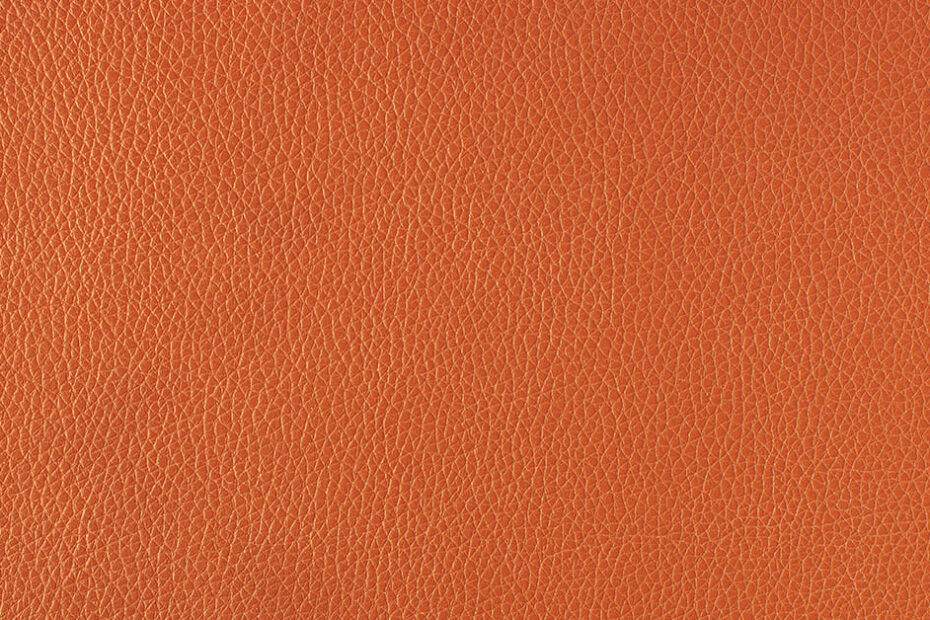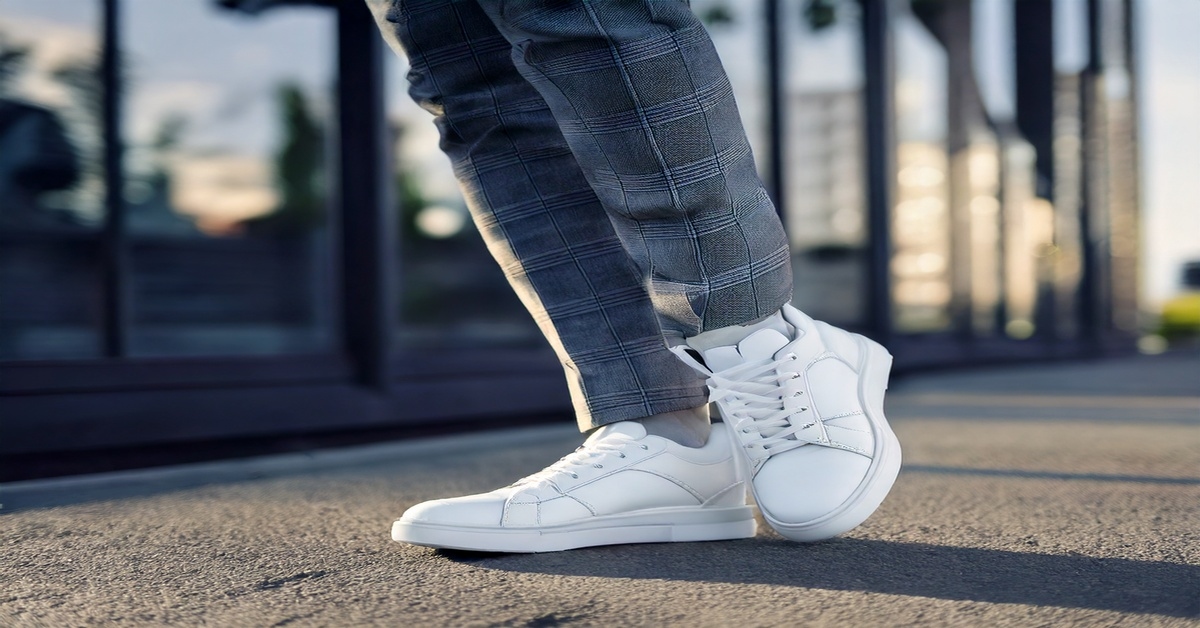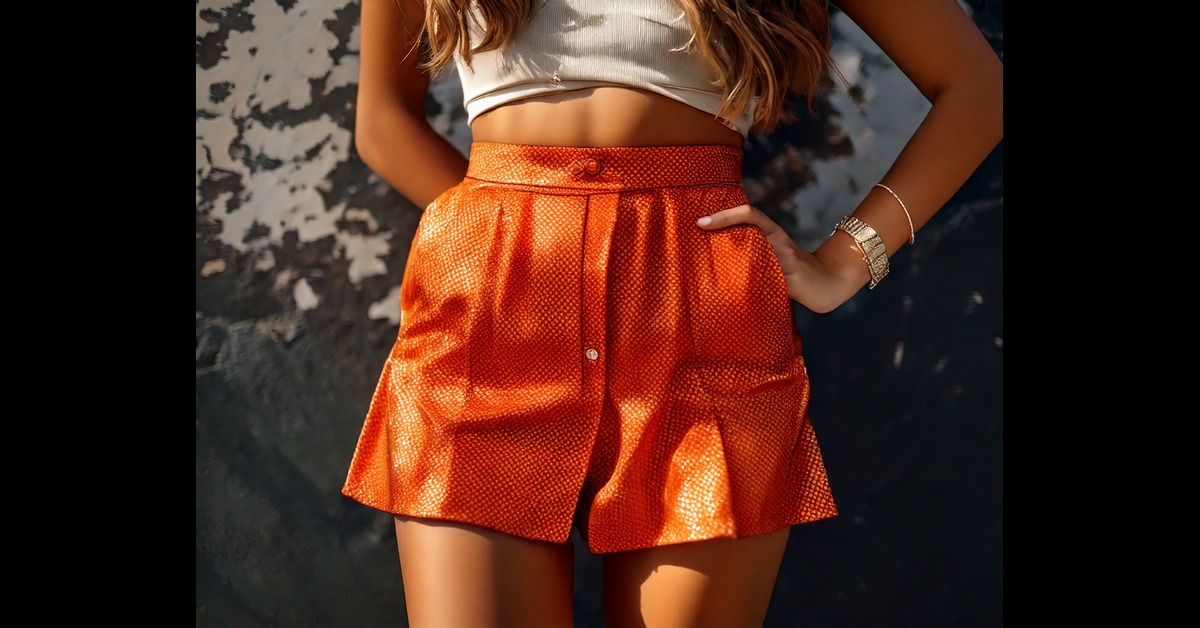Bovine leather, sourced from cattle hides, is a staple in the leather industry due to its durability. A finely crafted leather that ages gracefully with time, its creases tell stories of resilience. Known for its strength and adaptability, bovine leather is favored by artisans for creating everything from rugged boots to elegant bags, blending durability with an extravagant appeal. It’s not just a material but a piece of heritage shaped by centuries of tradition.
But what is bovine leather made of, and how does it differ from other varieties of leather? This post will look at the narrative of designing it, the advantages and disadvantages of using it, and how it differs from other leather types to understand its value in the market.
Are you looking for a leather jacket or bag that lasts? Bovine leather is your go-to for unbeatable durability, strength, and timeless style. It only gets better with time, giving you a favorite piece that’s built to endure, with top-tier craftsmanship in every detail.
What To Expect In This Article?
Where Does Bovine Leather Come From?
Leather that is derived from animals in the cattle includes cows, oxen, and other cattle like buffalo. After that, the hides pass through a process known as leather tanning, a skin preservation technique for further use. The process makes sure that the leather is immune to the effects of decomposition and improves strength and endurance.
Bovine hides are used for making bovine leather; they are usually thick and hard – making the material one of the strongest types of leather. This thickness makes it very suitable for heavy use, such as leather furniture, full grain leather jackets, and leather shoes.
Bovine leather, often regarded as one of the finest materials in the world of leathercraft, carries a story as rich as its texture. It is a material crafted from the top layer of cowhide, where the densest fibers lie, offering an unmatched blend of strength and flexibility.
This unique structure makes bovine not just durable but also incredibly elastic, allowing it to mold and age gracefully over time. Its origins, rooted in the rugged resilience of cattle, give it a character that stands out among all other leathers.
Appearance of Bovine Leather
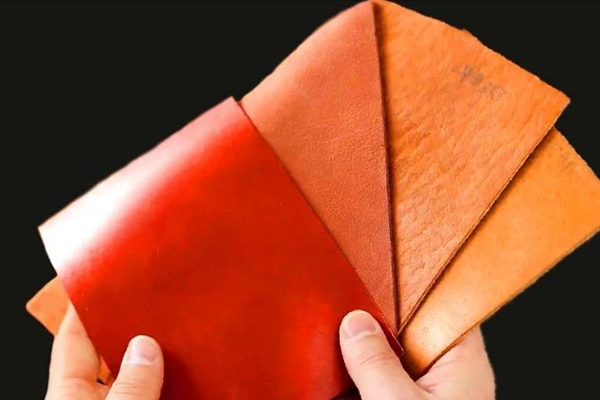
The bovine has a quite specific texture, generally known for its ruggedness and intrusive grain structure. Therefore, the texture relies on how leather is processed and what sort of finishing has been applied to it. For example, full grain leather that uses the outer layer of the hide keeps the most natural grain, while top grain leather has some of its grain sanded off to smooth out the blemishes or imperfections.
You may be wondering, is bovine leather real leather? It totally depends on its color, overall appeal, and finishing. The type of leather ranges from smooth bovine, used for luxury leather shoes, to coarse and grainy natural leather, seen in full grain cowhide leather jackets for men. The leather also has a patina that gives it a vintage and real feel as it ages with time for a better look.
It comes in different colors and leather finishes, thanks to the leather tanning process for leather products. Due to this flexibility, there is versatility in the styles and sleek designs of bovine, which is also a popular choice in various fashion and home designs.
Products Bovine Leather is Commonly Used For
Bovine leather upholstery includes apparel, bags, shoes, belts, sofas, auto interiors, and jackets that contain the highest durability of fabrics and are incredibly long-lasting. Here are some of the most common findings:
- Leather Jackets: Men’s leather jackets and women’s leather jackets are mostly made using bovine hides. The leather hides possess comfort, protection, and endurability, which makes them suitable for outerwear.
- Leather Bags: Due to the fact that bovine is stable and not easily damaged, leather bags such as messenger bags, tote bags, and backpacks are preferred for making.
- Leather Shoes: Each pair of leather shoes is inspected to ensure the bovine leather meets quality standards for durability, texture, and style.
- Leather Furniture: Couches, armchairs, and other pieces of furniture are made using full grain leather, which is obtained from bovine hides, and this adds luxury to the design while providing practicality in everyday usage
- Automotive Upholstery: It is widely used to cover the interior of seats and other parts of the interior of luxury automobiles because it is durable, eye-catching, and comforting.
These products benefit from the sturdy nature of bovine, ensuring long-lasting quality even under heavy use.
Bovine Leather vs Genuine Leather
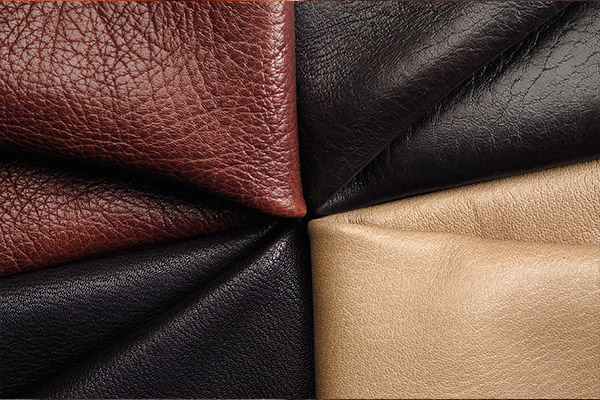
Bovine, made from cowhide, is thick, durable, and ideal for high-quality items like shoes and bags, offering a natural grain and structure. Genuine leather, meanwhile, is a lower-grade leather made from leftover hide layers, typically thinner and less durable. It is best for longevity and texture, while genuine leather suits lighter-use, budget-friendly items.
Essentially, good bovine is far more inexpensive but will not last as long, nor will it age as beautifully as genuine leather.
Bovine Leather vs Cow Leather
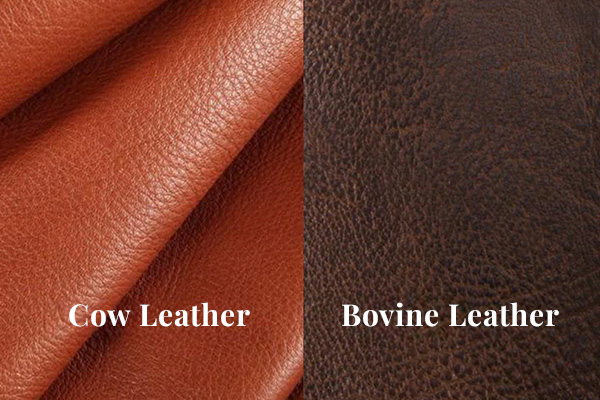
Bovine leather vs cow leather are easy to compare because they are often used interchangeably—it is usually the skin of the bovine family; while cow leather comes from cowhide. Both are durable and used in leather bags, leather shoes, and much more.
Bovine Leather vs Calfskin Leather
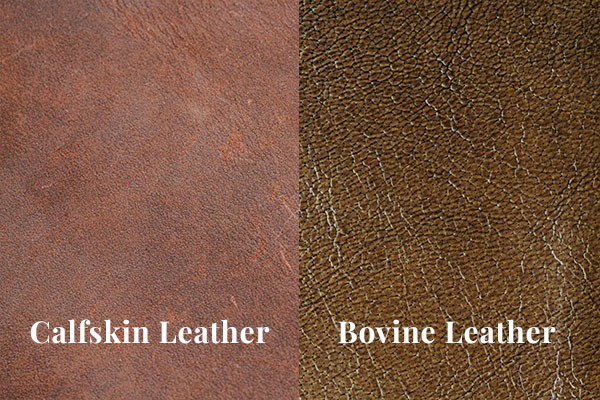
Bovine leather vs calfskin leather shows a significant difference in texture and quality. Calfskin leather comes from younger animals, giving it a smoother, softer texture. While bovine is thicker and stronger, calfskin is more luxurious and is often used in high-end products. However, calfskin is less durable than bovine, making it more suitable for fashion accessories rather than heavy-use items.
Bovine Leather vs Sheepskin Leather
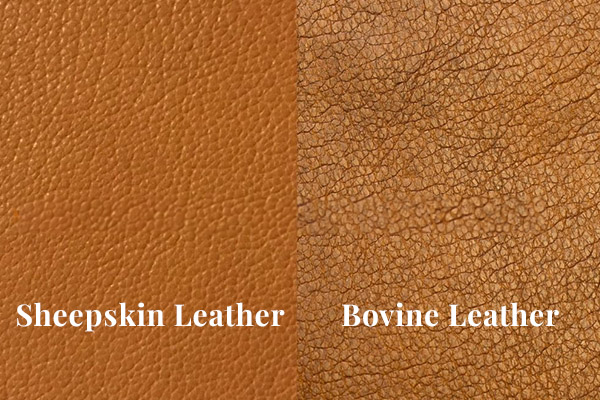
Sheepskin leather is much softer and lighter than bovine. When comparing bovine leather vs sheepskin leather, you’ll notice that sheepskin is more supple but less durable. It’s often used for items like shearling jackets, where flexibility and softness are prioritized over strength.
Bovine Leather vs Lambskin Leather
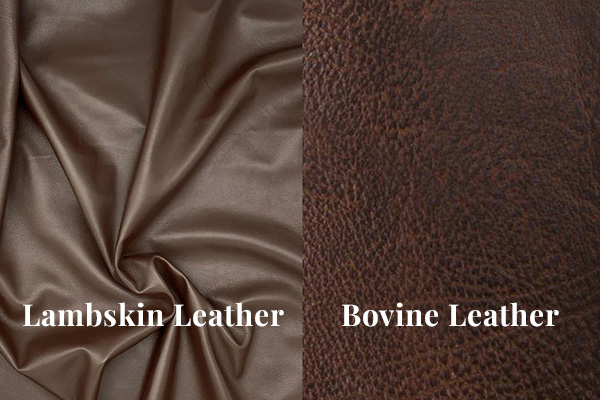
Lambskin leather is one of the softest leathers available and is often used in high-fashion items. When comparing bovine leather vs lambskin leather, lambskin is noticeably more delicate and luxurious. However, lambskin lacks the durability of bovine, making it better suited for items like luxury jackets rather than leather shoes or furniture.
Bovine Leather vs Goatskin Leather
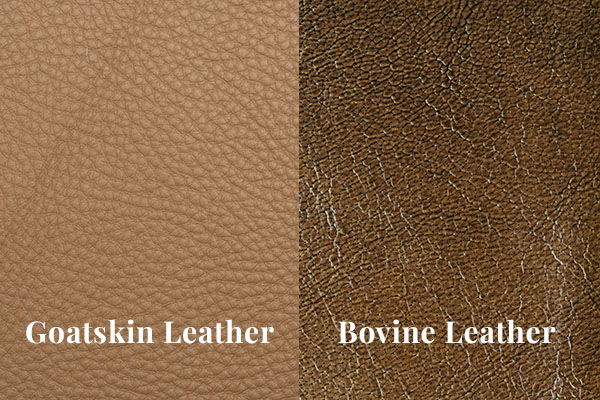
Bovine is thick, durable, and best for structured items like boots and belts. Goatskin leather is softer, flexible, and naturally water-resistant, ideal for gloves and jackets. Bovine offers a feel, while goatskin has a unique pebbled texture. Both types can be finished as suede leather for a stylish, textured look. Each leather has distinct qualities, suited to different styles and uses.
Advantages of Bovine Leather
Its various benefits have made this leather a contemporary and highly go-to material that can be used for multiple pieces of leather goods.
- Durability: It is shockingly tough and thick, and therefore, it resists tears and premature aging. You should be investing in full grain cowhide leather jackets for women or leather shoes, promising longevity.
- Versatility: With its thicker hide, is ideal for use in so many products, such as jackets, shoes, furniture, and accessories. It’s flexible and can adjust to many different designs, finishes, and textures, so it works well for designers and manufacturers.
- Appearance: It gives an appealing grain pattern, whether in tanned form, which enhances the product with a deep, vigorous look — rugged but stylish manner. With age, the leather will get a natural patina, which will improve its overall appearance.
- Easy Maintenance: It is relatively easy to maintain compared to other types of leather. Regular cleaning can keep it new for years.
Disadvantages of Bovine Leather
While the leather has numerous benefits, it does come with a few disadvantages.
- Weight: Bovine is thicker and heavier than other leathers, such as lambskin or goatskin. For example, those seeking lighter, more flexible materials for leather shoes or leather jackets may not like their heavy weight.
- Stiffness: It is stiff and uncomfortable when new; it’ll lose when used. People prefer soft or supple leather material that can be utilized in making gloves or other clothing items.
- Cost: Is bovine leather expensive? It’s less costly than luxury leathers such as calfskin, but bovine products still always come at a higher price. However, the cost of the leather is often fully justified due to the longevity of it.
- Water Sensitivity: It is more rigid, though it’s not entirely waterproof. Some leathers are treated to be more water resistant, but it can still be eradicated by too much water, staining, and cracking if not well cared for.
How to Care for Bovine Leather
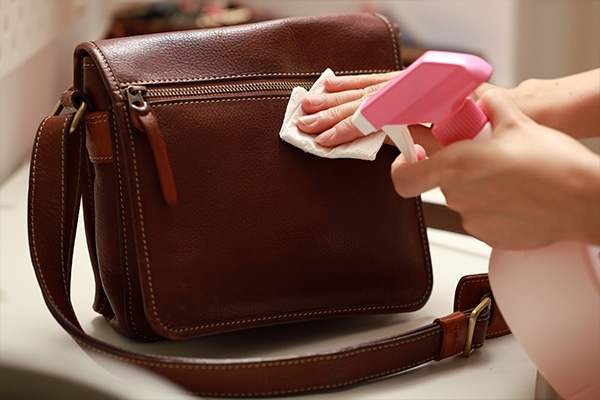
To give your products a long life, they must be given proper care. Here are some tips for keeping your leather in top shape:
- Cleaning: To remove dirt and dust from the surface, gently wipe it with a damp, soft cloth. Don’t use harsh chemicals that will damage leather.
- Avoid Excess Moisture: It is not entirely waterproof as it can not handle rainy weather. When wet, wipe off the water by using a dry cloth; let it air dry naturally; do not heat it—you can crack the leather.
- Storage: The products must be stored in a cool, dry place and away from direct sunlight. The leather can fade and dry out with excessive sunlight exposure.
These steps will ensure that you keep your leather texture and leather patina in good shape for a long time without making your leather items look cracked.
FAQs
Does bovine leather smell?
Yes, it has a natural, earthy smell typical of genuine leather. This smell is often considered a sign of high-quality, authentic leather.
What is 100% full grain bovine leather?
This refers to leather made from the top layer of the hide, which has not been sanded or buffed, leaving the natural grain intact. It’s the highest quality of leather available.
How durable is bovine leather?
It is highly durable due to its leather thickness and strength. It’s resistant to wear and tear, making it ideal for leather bags, jackets, and furniture.
Is bovine leather waterproof?
While it can be treated to be water-resistant, it is not naturally waterproof. Excessive exposure to moisture can damage the leather, so it’s essential to keep it dry.
What is the benefit of bovine leather?
The key benefits are its durability, versatility, and ability to age beautifully. With proper care, it can last for decades, developing a rich patina over time.
Final Thoughts
In conclusion, it is one of the most durable and versatile leathers available, making it a popular choice for a wide range of products, from leather jackets to furniture. You may also search full grain leather vs top grain leather. Find out what the best grades of leather are for you. Bovine leather meaning derived from the hides of cattle, is renowned for its strength and versatility. That makes it an excellent choice for various products.
Understanding its advantages and how it compares to other types of leather helps ensure you select the right material for your needs. Whether you’re looking for something sturdy like cowhide leather or something softer like lambskin, each type of leather has its unique properties.
Just like this, bonded leather is an affordable choice, while nubuck leather offers a luxurious texture and durability. Each has its distinct advantages depending on the intended use.
With proper care, the leather will develop a beautiful patina over time and continue to look and perform exceptionally well for years.

